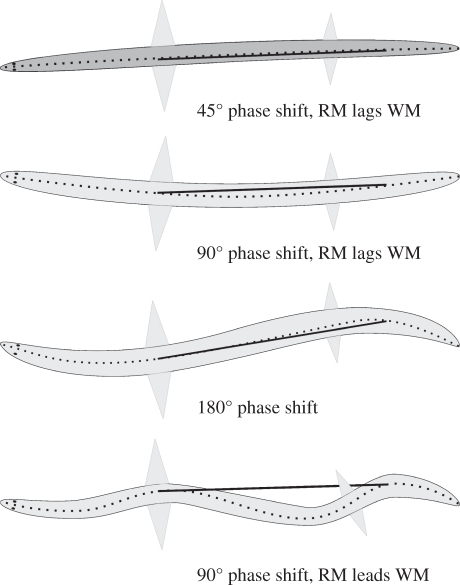Figure 6.
Hypothetical effects of relative degree of body curvature on the phase relationship between strain of internalized red muscles (RM) and overlying white muscles (WM), assuming the red muscle is able to shorten independently of the overlying white muscle and the white muscle shortens in phase with local body curvature. Dashed line represents midline of the fish. Solid line represents the line of action of the internalized red muscle whose functional origin and insertion, in this example, span 50% of the fish's length. The upper panel shows the phase relationship as observed in the thunniform mako shark and yellowfin tuna, where strain of the red muscle lags that of the adjacent white muscle by about 40° of a strain cycle. Subsequent panels show increasing degrees of body curvature and increasing phase lags between red and white muscle shortening, whereby in the third panel strain in the red and white muscles are 180° out of phase, and in the bottom panel strain of the red muscle leads rather than lags that of the adjacent white muscle.

